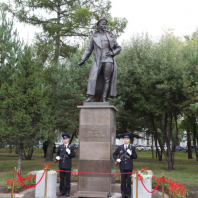Анонс Osprey на сентябрь 2023
 birserg_1977 — 01.05.2023
birserg_1977 — 01.05.2023

A fascinating exploration of the often-overlooked gunnery duels
between the formidable artillery weapons in the Atlantic Wall
defences and the mighty US and Royal Navy battleships.
Amphibious landings were an essential tool of Allied military
strategy in World War II. The Royal Navy and the US Navy provided
operational mobility that allowed the Allies to strike unexpectedly
across the vast coastlines of the Mediterranean and Atlantic. Nazi
Germany did not have sufficient naval power to seriously contest
this, and consequently relied heavily on the huge and costly
Atlantic Wall fortification programme. By 1944, the French coast
featured more than 1,900 coastal guns over 75mm in calibre.
At the heart of this fascinating book by renowned military
historian Steven J. Zaloga is the clash between Batterie Hamburg
(defending Cherbourg) and the Allied naval bombardment group led by
the battleship USS Texas on 25 June 1944. Stunning artworks reveal
details of the design, construction and ammunition of the weapons
involved, and the locations of important sites are shown on maps.
The author also explores the evolution of Allied naval doctrine,
which was based on repeated experiences during a succession of
amphibious operations, and which enabled the Allies to successfully
overcome the coastal gun threat. Illustrated with over 50 period
photographs, the result is a fascinating exploration of a key
battle during the Allied invasion of mainland Europe.

A spectacularly illustrated new history and analysis of the
strategic bombing campaign in the Korean War, which saw the last
combat of America's legendary B-29s.
Just five years after they defeated Japan, at the dawn of the jet
age, the most advanced bomber of World War II was already
obsolescent. But the legendary war-winning Superfortresses had one
more war to fight, in the strategic air campaign against North
Korea.
The bombers' task was to destroy North Korea's facilities for
waging war, from industry and hydroelectric dams to airfields and
bridges. However, it was a challenging campaign, in which the
strategy was not merely military but political. In this fascinating
book, airpower scholar and former RAF pilot Michael Napier explains
how the campaign was fought, and how the technique of 'bombing to
negotiate' that would become notorious in Vietnam was already being
used in Korea. He analyses in detail the relationship between
battlefield progress, armistice negotiations and the bombing
strategy developed over the complex campaign.
In the skies over Korea, the B-29s operated in a new world
dominated by jet fighters and jet age technology, and tactics were
developing rapidly. Packed with original illustrations, this book
includes dramatic air scenes featuring B-29s, MiG-15s, AD
Skyraiders and Skyknight jet nightfighters in action. It also
includes maps, 3D recreations of missions and explanatory 3D
diagrams to bring the conflict to life.
This is a fascinating, dramatic account of the last battles of the
piston-engined aircraft era as the superpowers vied for victory in
the first clash of the Cold War.

An examination of two of the most high-profile air and land
weapons to be deployed on the Eastern Front in World War II.
In late 1942, as part of its attempts to strike back at
ever-increasing numbers of Soviet tanks, the German air ministry
authorised the development of an adaptation and enhancement of the
longspan Junkers Ju 87D-5 Stuka dive-bomber. The aircraft was duly
fitted with two underwing pods containing 37 mm BK cannon - an
antiaircraft cannon with its origins dating back to 1933. The
solid, slow, Ju 87 airframe offered the Luftwaffe an ideal platform
for specialist, low level, 'tank-killing' operations.
Despite the wealth of experience possessed by some of the
Luftwaffe's ground-attack and dive-bomber aces, knocking out T-34
tanks from the air was a demanding and difficult process.
Nevertheless, some Luftwaffe pilots notched up impressive tank
scores, and the Ju 87 is credited with the destruction of more than
100 tanks across the central and southern sectors of the Eastern
Front, including during the Battle of Kursk.
Including personal accounts from Stuka pilots and biographies of
the anti-tank aces, together with detailed photographs of the
cannon installation into the Ju 87G and details of the construction
of the T-34 illustrated using specially commissioned artwork, this
book covers the epic clash of two legendary machines of World War
II.

A superbly illustrated new account of how Germany's High Seas
Fleet was built, operated and fought, as it challenged the world's
most powerful navy in World War I.
Seven years before the outbreak of World War I, the Imperial German
Navy rebranded its Home Fleet as the Hochseeflotte, or High Seas
Fleet. It was a force designed to take on the Royal Navy, then the
world's most powerful, and for the next four years the North Sea
would be their battleground.
Drawing on extensive research, Angus Konstam offers the reader a
concise, fully illustrated account of how the entire High Seas
Fleet was designed and built, how it operated, and how it fought.
The fleet was a modern, balanced force of dreadnought battleships,
battlecruisers, cruisers and torpedo boats, using Zeppelins and
U-boats for reconnaissance. The ultimate test between them came in
May 1916, when they clashed at Jutland.
Packed with spectacular original artwork, maps, 3D diagrams and
archive photos, it explains how and why the fleet was built, its
role, and how and why it fought as it did. From fighting doctrine
and crew training to intelligence, logistics, and gunnery, this
book is an essential guide to the Kaiser's audacious bid for naval
glory.

Launching Osprey's new Fleet series, this is a spectacularly
illustrated, concise and comprehensive account of the Imperial
Japanese Navy's striking force at the height of its power.
The Imperial Japanese Navy (IJN) entered the Pacific War as one of
the most formidable navies in the world, and its combat power was
concentrated into one force, the Combined Fleet. In the months that
followed Pearl Harbor it enjoyed an unrivaled string of victories,
shattering American, British, Australian, and Dutch naval forces.
This period of expansion and constant victories ended at the Battle
of Midway, after which the Combined Fleet was forced onto the
defensive.
In this book, Mark Stille draws on his decades of IJN research to
explain what made the Combined Fleet the fighting force that it
was. Packed with superb original artwork, explanatory 3D diagrams
and maps, it examines the fleet's doctrine, innovative tactics and
powerful warships. It also details the qualities and importance of
IJN leadership, logistics, naval infrastructure, and Japan's
shipbuilding capability, and gives an account and analysis of the
IJN's combat performance during these crucial months - not just in
the famous carrier battles, but also exploring lesser-known
elements such as IJN amphibious forces and land-based aviation.

Michael Napier details the critical role of air power in the
skies over Afghanistan, from the ten-year occupation by the USSR in
the 1980s through to the US and NATO campaign from 2001 to
2021.
US and British forces, strongly supported by air power, invaded
Afghanistan in late 2001 in response to the Al Qaida attacks on
9/11. What began as a small-scale operation of 2,500 troops with
the limited objective of destroying Al Qaida became ever larger,
growing to over 100,000 troops ten years later. This experience
matched that of the Soviets after their invasion in late 1979, when
they saw a massive increase in resistance by Mujahidin.
Afghan Air Wars details how Soviet aircraft including the MiG-21,
MiG-23, Su-17 and Su-25, as well as Mi-8 and Mi-24 helicopters
supported Soviet offensives in the Panjshir Valley and other
regions. Despite these high-octane operations and overwhelming air
superiority, Soviet forces eventually withdrew.
Some 20 years later, US and NATO air forces were deployed in
similar roles. F-15E, F-16, F/A-18, A-10, Mirage, Harrier and
Tornado aircraft all saw action in the skies over Afghanistan as
did the CH-47 Chinook and AH-64 Apache helicopters. Mike Napier
fully details their series of operations in a hostile environment
as well as the advent of high-resolution targeting pods and
Precision Guided Munitions (PGM) which enabled aircraft to stand
off from threat areas and also to deploy their weapons with deadly
accuracy. The conflict also saw the groundbreaking introduction of
Remotely Piloted Vehicles (RPV) into routine air operations.
Afghan Air Wars is richly illustrated with over 240 images - both
official photos and privately taken, in-theatre images which have
not been previously published. It also includes first-hand accounts
by aircrews involved to create a unique and comprehensive picture
of the part played by air power over Afghanistan in the last 40
years.

An authoritative analysis of how Putin's Russia conquered the
Crimea in 2014 using 'grey zone' warfare techniques, blending
operations by anonymous special forces with cyber, sabotage, and
propaganda.
Russia's annexation of Crimea in 2014 was almost bloodless - fought
as much through propaganda, cyberattacks and subversion as by force
of arms - but it is crucial for our understanding of both modern
warfare and recent Russian history. Ironically, this slick triumph
eventually led to the full-scale invasion of Ukraine, the largest
and costliest conventional war in Europe since 1945.
This is a fascinating account of the Crimea conquest from a
supremely qualified expert on modern Russian forces. Illustrated
throughout, it explores how Russia developed its new model of
'hybrid' or 'grey zone' warfare, and planned and deployed it
against Crimea, from the choreographed appearance of 'spontaneous'
protesters through to the deployment of unbadged Russian elite
forces.
In this book Mark Galeotti explores the lessons that Russia,
Ukraine, and the West took from it - correctly and mistakenly - and
how this apparently textbook operation sowed the seeds that would
erupt so catastrophically in 2022.

 Меню для новогоднего корпоратива: как угодить всем сотрудникам
Меню для новогоднего корпоратива: как угодить всем сотрудникам  О как...
О как...  Премьер-министр Катара об атаке на Доху
Премьер-министр Катара об атаке на Доху  Куда увёз поезд Анну Каренину?
Куда увёз поезд Анну Каренину?  Дзержинский открыт!
Дзержинский открыт!  2025. Дайвинг на севере Приморья. Бухта Рудная. Сентябрь.
2025. Дайвинг на севере Приморья. Бухта Рудная. Сентябрь.  умные не брачуюцца
умные не брачуюцца  Совет из потока для того, кому нужно его услышать
Совет из потока для того, кому нужно его услышать
 Christian Zacharias
Christian Zacharias 



